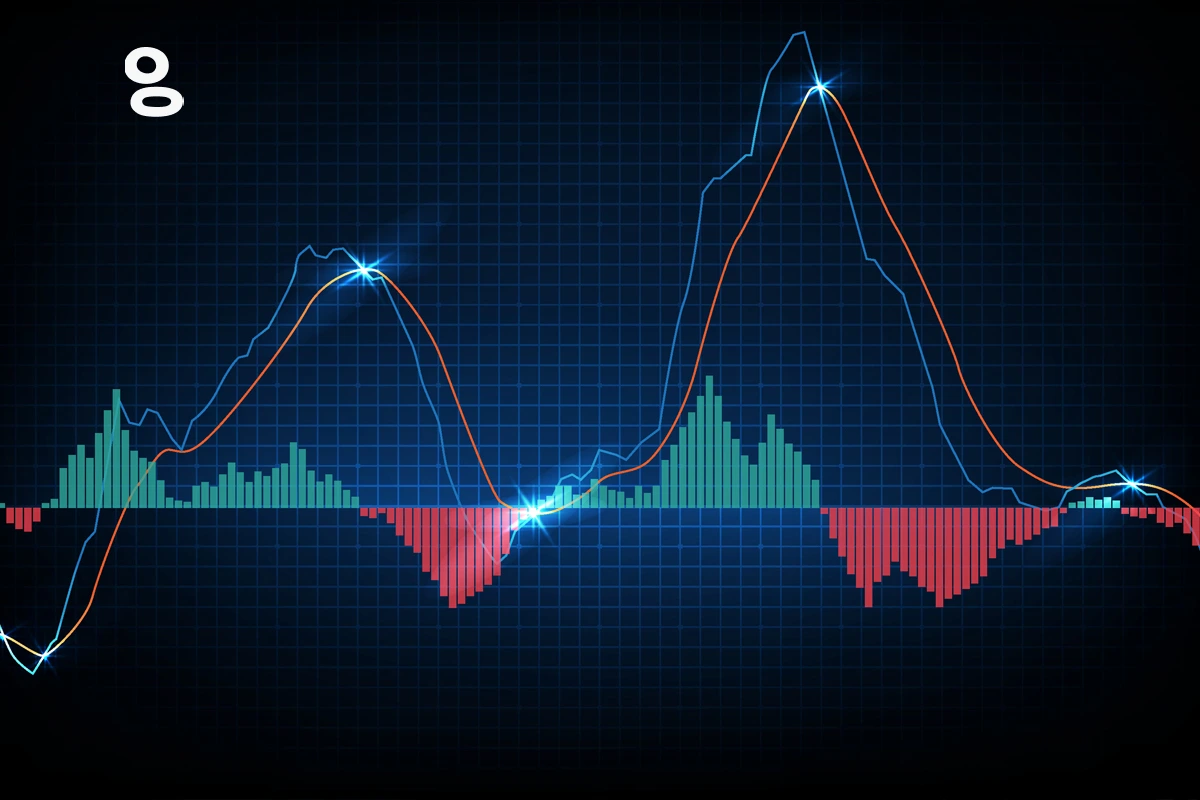Plenty of traders jump into forex hoping to catch those “perfect” opportunities, but the reality is that the market can be wild and unpredictable. Without a steady way to break down what’s happening, emotions can take over, and trades become snap decisions you later regret. That’s where technical indicators earn their keep. They focus on the important stuff—price, volume, momentum—and turn it into a clearer view of the market. With them, spotting trends, gauging strength, and reading volatility becomes a whole lot easier. Instead of gambling on gut feelings, you can use them to confirm signals before you pull the trigger. That little bit of structure does more than just boost your confidence—it turns indicators into a key player in managing risk and building a strategy that holds up over time.
Popular Technical Indicators and Their Applications
A significant percentage of traders rely on technical indicators to evaluate market dynamics. However, using too many at once leads to counterproductive results. Lacking an overarching strategy, a chart will become overly complex and create conflicting signals, soon becoming more harmful than helpful. To counteract this setback, many traders employ a judiciously selected set of proven and dependable tools. Most frequently used among these are Moving Averages, MACD, RSI, and Bollinger Bands. These tools fall into three main categories: trend followers, momentum evaluators, and volatility evaluators. Though each tool presents unique information, together, they provide significantly better insight into market forces.
Confluence and Combinations
There’s no magic formula that works perfectly in every market. The “best” approach depends on your goals, your style, and the kind of market you’re working with at the time. A good method involves combining complementary indicators. For example, using a trend indicator like a Moving Average with a momentum indicator like the RSI or MACD can increase the confidence and accuracy of your market decisions, giving you a focused and unambiguous analytical view.
MACD: The Momentum and Trend Tracker
The Moving Average Convergence Divergence, or MACD, is a fundamental tool for tracking momentum and detecting underlying trends. It has two main elements: the MACD line and a signal line. A histogram also visually represents the difference between the two lines. Traders often see a rise in the MACD line above its signal line as a sign of bullish momentum. A fall below may indicate bearish momentum. In addition, market participants pay special attention to deviations between the MACD line and price movements because such deviations may provide preliminary signs of prospective trend reversals. By analyzing the magnitude of the histogram bars, market participants also help to gauge changes in momentum. One important signal is when the price reaches a new top while the MACD demonstrates a peak decline. Such a situation is traditionally defined as bearish divergence and frequently signals an approaching fall.
The RSI for Momentum Analysis
Traders often face a significant challenge: determining whether a trend has lost strength or if a certain price level is unsustainable. A wrong judgment of this timing can lead to lost profits or unjustified losses. One of the go-to tools for this? The Relative Strength Index (RSI). It’s like a thermometer for the market, measuring momentum on a scale from 0 to 100. It helps determine the underlying strength behind price movements. If the RSI climbs above 70, the market’s probably overbought—meaning a pullback or reversal could be around the corner. On the flip side, a drop below 30 suggests it’s oversold, which often means a bounce is coming. By using these levels, traders can maximize their entry and exit points, using momentum analysis as opposed to emotional choice or lagging indicators. The RSI also gives a key signal when it crosses the 50 mark: a move above 50 indicates a shift to bullish momentum, while a fall below can signal a move toward bearish momentum.
Trend and Volatility-Based Strategies
Determining essential trends and the best entry or exit points among continuously shifting market environments presents considerable difficulties. Lack of a firm methodology for such decisions means they equally depend upon intuitive feeling and factual evidence, leading to inconsistency in results.
Moving Averages: The Trend Crossover System
A favorite trend-trading approach is the moving average crossover. You’ve got two main options: the Simple Moving Average (SMA), which gives equal weight to all prices, or the Exponential Moving Average (EMA), which pays more attention to recent moves. A classic trick? Pair a fast one (like the 50-period) with a slower one (say, the 200-period) to spot trends and potential reversals. When the short-term line climbs above the long-term line, traders often see it as a buy signal. When it crosses below, it signals a sell. Moving averages aren’t just handy for buy or sell signals—they often work like moving lines of support or resistance. Price tends to hesitate or reverse around them, which can be a significant clue when you’re planning your next move.
Bollinger Bands: Gauging Volatility
Determining levels of volatility can be effectively done using Bollinger Bands, which are an essential analytical tool. These bands consist of a central moving average between two outer bands, and their width changes according to market volatility. A critical indicator in this regard is recognizing a “squeeze,” which occurs where those bands compress together, implying that there will soon be a period when volatility will lessen and often lead to a big breakout. Additionally, by examining those outer bands, traders seek to identify signals of overbought and oversold scenarios as market prices move outside those defined boundaries. These are helpful in spotting points of friction in the market where significant movements get triggered.
Advanced Tools for Key Market Levels
Catching a market when it’s overbought or oversold can be the difference between nailing a trade and chasing a dying trend. Tools like the RSI and Stochastic Oscillator help you do precisely this. The Stochastic oscillator works a lot like the RSI—it checks where the price closed relative to its recent range. If it shoots above 80, the market might be running too hot; below 20, it’s probably oversold. It’s a handy nudge to pause and ask, “Does this trade still add up?”
Fibonacci Retracement and Pivot Points
Fibonacci retracement lines are a favorite topic among forex traders—and for good reason. They offer a simple way to identify potential reversal zones based on key percentages from past price moves. They appear as horizontal indicators based on the Fibonacci series, a mathematical phenomenon where each number is the sum of the two preceding ones. They help identify potential support and resistance areas. The use of the tool, transitioning from a significant low to a considerable high, identifies necessary retracement levels (23.6%, 38.2%, 50%, 61.8%, and 78.6%) as areas where price action tends to change direction.
Investors often view these levels as significant points for making buys or sells during a market decline. Likewise, a question often asked by traders is about the definition of pivot points and their usage within the forex trading context. Pivot points pinpoint potential areas of support and resistance for the current trading day. Their identification hinges on the high, low, and closing value of the previous trading day, acting as a guideline for traders. The pivot point (PP) is your anchor, with resistance levels (R1, R2, R3) above and support levels (S1, S2, S3) below. Traders use these like a roadmap—figuring out entries, exits, and where to take profits.
Trading Discipline and Market Realities
One of the common problems faced while implementing technical indicators is overfitting, a situation where a strategy proves to be extremely good in backtesting using past data but later on shows poor performance in real market conditions. Overloading your charts with too many indicators—or building an overly complex strategy—can quickly become unmanageable. The fix? The golden rule? Keep it simple. Use settings you’ve tested and trust, and try them on different pairs and timeframes.
In day trading, speed matters—so fast-moving indicators like the RSI, Stochastic, and MACD are your friends. Shorter-period moving averages can also help you lock onto intraday trends faster. Still, indicators have their critics—they lag because they rely on past data. Indicators are significant for confirmation, but they’re not crystal balls. That’s why some traders combine them with other tools—or ditch them entirely—and just focus on price action: candlestick patterns, trendlines, and good old support and resistance.
Final Remarks
Summarily, technical indicators are critical tools in the practice of foreign exchange trading. They organize markets, shed light on possible opportunities, and assist in decision-making. However, you must be careful to identify their inherent constraints. No single indicator can predict future price action perfectly or replace a trader’s experience and understanding. Their effectiveness is essentially dependent on their usage. A great deal of time is required in the process of choosing a few suitable tools, calibrating them following one’s trading strategy, and continually seeking confirmation. Discipline, risk control, and flexibility are fundamental elements in the effective implementation of a trading strategy.







